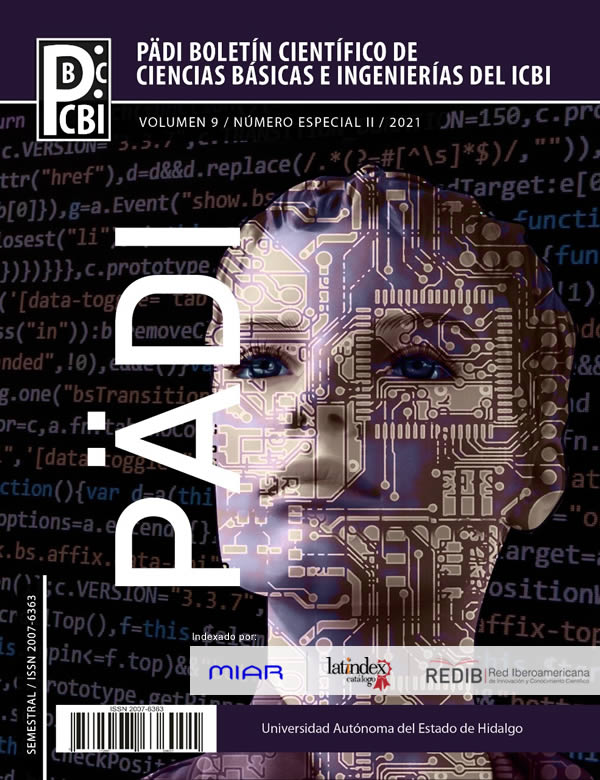In silico design of quinolones with TiO2 nano-carrier
Abstract
In this work, the in silico design of 17 molecules based on the structure of a quinolone was carried out, in which the effect of triazoles, tetrazoles and isatins as functional groups was evaluated through the increase of the minimum inhibitory concentration (MIC) calculated through a quantitative structure-activity relationship (QSAR) study comparing with the experimental MIC of commercial quinolones. In addition, molecular couplings were performed with S. aureus DNA topoisomerase IV (biological target) to determine the site and energy of coupling to the biological target of quinolones. From these results, complexes were made between the best commercial quinolones and designed structures attached to a TiO2 unit cell, acting as a nanocarrier for the release of the drug.
Downloads
References
Alos, J.-I. (2009). Quinolonas. Enfermedades infecciosas y microbiologia clinica, 27(5), 290–297.
Álvarez, D. A., Garza, G. S., & Vazquez, R. (2015). Quinolones. Nowadays perspectives and mechanisms of resistance. Revista chilena de infectologia: organo oficial de La sociedad chilena de infectologia, 32(5), 499–504.
Çeşmeli, S., & Biray, C. (2019). Application of titanium dioxide (TiO2) nanoparticles in cancer therapies. Journal of drug targeting, 27(7), 762–766.
Cervantes, E., García, R., & Salazar, P. M. (2014). Características generales del Staphylococcus aureus. Revista mexicana de patología clínica y medicina de laboratorio, 61(1), 28–40.
Chan, P. F., Srikannathasan, V., Huang, J., Cui, H., Fosberry, A. P., Gu, M., Hann, M. M., Hibbs, M., Homes, P., Ingraham, K., & others. (2015). Structural basis of DNA gyrase inhibition by antibacterial QPT-1, anticancer drug etoposide and moxifloxacin. Nature communications, 6(1), 1–13.
Garcia, M., & Alonso, M. J. (2012). Chitosan-based drug nanocarriers: where do we stand? Journal of controlled release, 161(2), 496–504.
Jacoby, G. A. (2005). Mechanisms of resistance to quinolones. Clinical infectious diseases, 41(Supplement_2), S120--S126.
Lebeque, Y., Morris, H. J., & Calás, N. (2006). Infecciones nosocomiales: incidencia de la Pseudomonas aeruginosa. Revista cubana de medicina, 45(1), 0.
López, L. (2014). Papel del ambiente hospitalario y los equipamientos en la transmisión de las infecciones nosocomiales. Enfermedades infecciosas y microbiología Clínica, 32(7), 459–464.
Maguiña, C. (2016). Infecciones nosocomiales. Acta médica peruana, 33(3), 175–177.
Mazón, J. A., & Verneiulle, J. S. (2019). Factores de riesgos que influyen en el desarrollo de las enfermedades nosocomiales.
McGuinness, W. A., Malachowa, N., & DeLeo, F. R. (2017). Focus: infectious diseases: vancomycin resistance in Staphylococcus aureus. The yale journal of biology and medicine, 90(2), 269.
Oteo, J. (2019). Comprendiendo la resistencia a antibióticos. Revista de Investigación y educación en ciencias de la salud (RIECS), 2019, v. 4, n. 2, p. 84-89.
Pachay, J. W. (2018). Las infecciones bacterianas y su resistencia a los antibióticos. Caso de estudio: Hospital oncológico “Dr. Julio Villacreses Colmont Solca”, portoviejo. Revista universidad y sociedad, 10(5), 219–223.
Pham, T. D. M., Ziora, Z. M., & Blaskovich, M. A. T. (2019). Quinolone antibiotics. Medchemcomm, 10(10), 1719–1739.
Rodríguez, J. M. (2005). Mecanismos de resistencia a quinolonas mediada por plásmidos. Enfermedades infecciosas y microbiologia clinica, 23(1), 25–31.
Sepúlveda, A. E. C., Enríquez, M. E. M., & Patiño, N. M. (2008). Quinolonas. Revista de la facultad de medicina UNAM, 51(4), 173–177.
Vashist, A., Kaushik, A., Ghosal, A., Bala, J., Nikkhah-Moshaie, R., A Wani, W., Manickam, P., & Nair, M. (2018). Nanocomposite hydrogels: advances in nanofillers used for nanomedicine. Gels, 4(3), 75.













